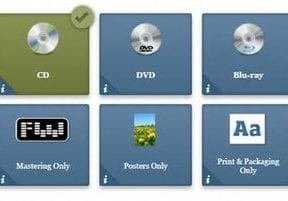I often speak with manufacturers that want to sell their products online directly to retailers or even end users. But they have an established distribution channel that they don’t want to upset. Thus they avoid selling on an ecommerce site.
The situation usually is something like this. A manufacturer wants to sell its products as quickly as possible. It is competing with other manufacturers that are selling online and don’t have the added cost of distributors.
There is clearly a financial incentive in selling directly to consumers and retailers: The manufacturer has a higher margin or at least has greater control over its margins. But there is also a risk when distributors represent most of the manufacturer’s income and have relationships with resellers.
So what is a manufacturer to do? Start by answering these questions:
- What is the relationship with distributors?
- How much revenue comes from distributors?
- What is the breakdown of revenue across distributors?
- What types of services do distributors provide to customers? Do you, as the manufacturer, provide those services?
- Are distributors selling products online? What is the quality of their website?
- Are competitors selling online?
If a manufacturer values its distributors, how can it create a mutually beneficial setup for the manufacturer, the distributors, and ultimately the customers?
Here are five options. Each of the options has sales tax implications. Manufacturers should do their research and consult with a tax professional.
Distributor Fulfillment
One solution is for manufacturers to take orders on an ecommerce site and fulfill them through distributors. This scenario requires manufacturers to decide how distributors would be paid. It could be via a commission, wherein a manufacturer collects the credit-card proceeds in its merchant account and then pays the distributors. Or, the distributors could receive the initial proceeds in their merchant account and pay the manufacturer. The latter is more complex and much less common, in my experience.
If its distributors are providing services to customers that a manufacturer does not, enabling the distributors to fulfill the orders can keep that customer in place.
But what if no distributor has a relationship with a buyer? How would a manufacturer decide which distributor gets the fulfillment business? There are a few choices.
- Round robin: rotate through your distributors.
- Assign based on geography.
- Assign based on which distributors have the products in stock.
- Assign based on a scoring system, wherein distributors are graded on customer service or turnaround time. Orders are then rotated to top scorers.
Ecommerce Sites for Distributors
Another solution is for a manufacturer to create sites for distributors that are preloaded with its products. As orders are placed on the sites, the revenue (via credit card payments) is received by the distributor into its merchant account.
If a manufacturer drop ships on behalf of its distributors, the manufacturer can automate the orders from the distributors’ sites, as well as integrate tracking of shipments.
It is reasonable for manufacturers to charge the distributors a fee for the setup of the site. Manufacturers should also have very specific definitions of what this site would include. If its distributors are not selling products online, a manufacturer could consider allowing the distributors to add competitor’s products to the site. This would encourage the distributors to use the site as their main ecommerce outlet, thus saving them the headache of setting it up themselves.
How well this would work depends on the distributors and whether they are established online. Also, the distributors may require ongoing customer service training and instruction on how to use their ecommerce stores.
Provide Ecommerce Tools
If many of its distributors are already selling online, a manufacturer can offer tools to make it easier to sell its products on their sites. This could include data feeds or files that enable the distributors to easily import the data. It could also include an API that enables distributors to receive data about product availability and, also, to place an order.
Before going down this path, manufacturers should survey their distributors and to learn what formats would be the most beneficial. Manufacturers should consider standardizing the offering and have a plan for keeping it up to date.
Sell At a Higher Price
Another option is for manufacturers to create an ecommerce store and then sell products at a higher price than their distributors. This provides the convenience for buyers who prefer buying directly from the manufacturer, or have otherwise found the manufacturer’s site, not a distributor’s.
This scenario provides manufacturers with higher margins. And distributors have the confidence that they can retain the business because they have better pricing.
Refer Buyers to Distributors
Manufacturers could use their websites as catalogs, where buyers search the products and access helpful resources, such as specification sheets, images, and videos. The product pages would have a button that directs buyers to a distributor, where they complete the purchase.
There are a few ways to do this.
- Buyers enter their zip code on the page and the manufacturer links to a distributor near them that carries the product and hopefully has it in stock.
- Buyers click a button to “Find a Distributor,” which takes them to a general distributor search page. When they find the distributor, buyers then provide information on what they want to buy.
- Manufacturers provide a form on their site that buyers fill out, to have a distributor contact them to complete the order. (The form is automatically emailed to the distributor.)
- Buyers could add items to a cart on the manufacturer’s site, and then the manufacturer emails the contents of the cart to a distributor, who would follow up to finalize the order and collect payment.
There are downsides to this option. It interrupts the buying process and inserts more manual steps. Part of the reason buyers prefer shopping online, after all, is the convenience. This process makes it less convenient. Moreover, manufacturers cannot advertise on Google Shopping if they don’t have a buy button and a price on the product page.




